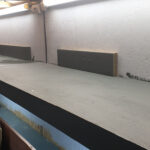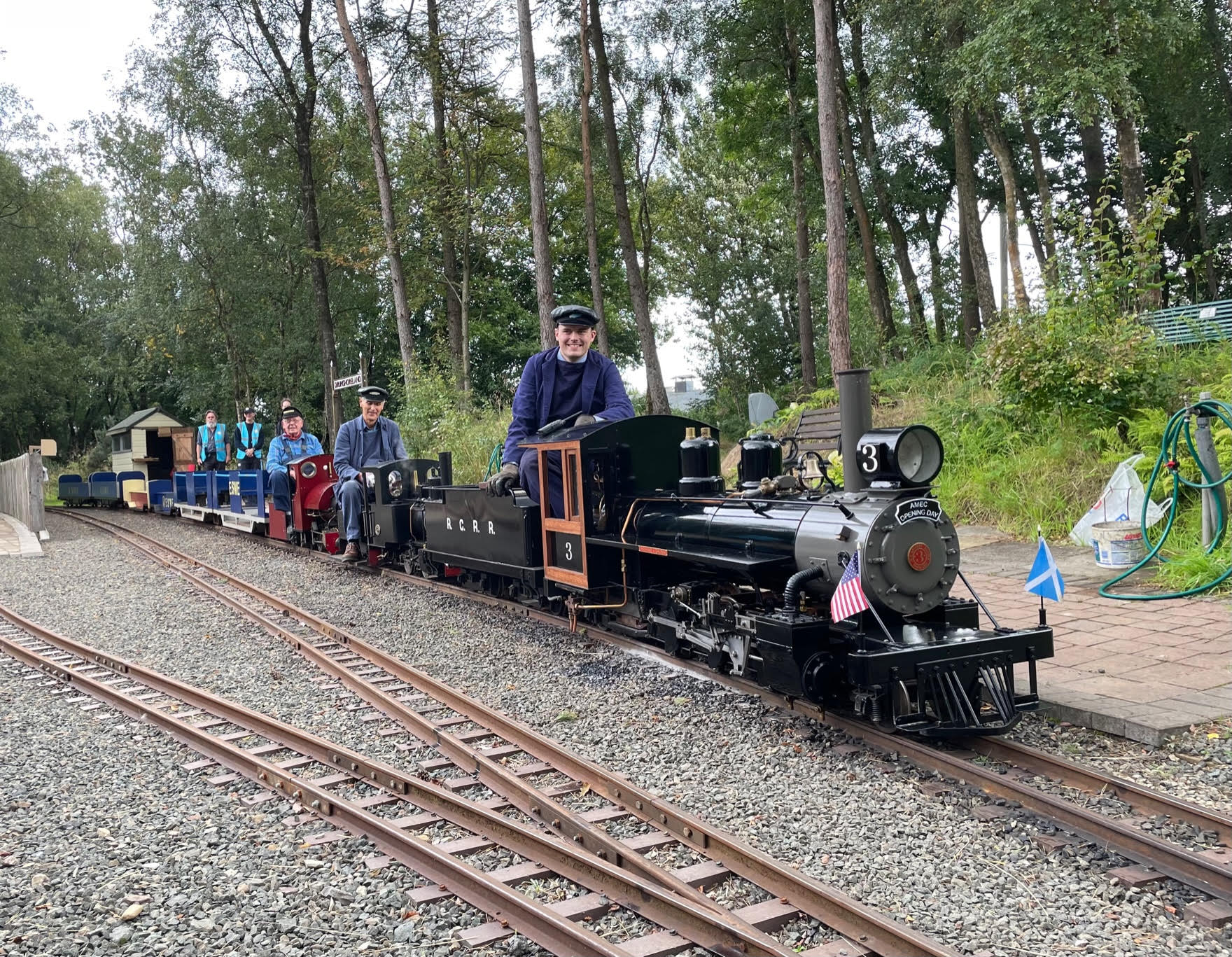In Paul’s earlier article (The Ubiquitous Figure Of Eight) we left him as he moved into the newly built shed. Paul brings us further up to date with developments……
A bit of gardening
The construction of my shed foundations had left a bit of a legacy (mess) of the rest of the garden. The people I had paid to build the concrete base had insisted on using a mini-digger, and in the process of getting the digger from the front of the house to the back garden, had demolished the steps to my kitchen door and left my lawn more like a muddy swamp. To cap it all the soil removed to make way for the concrete base had been stacked up at the back of the garden.
I decided to put decking round the back of the house, with a paved circle of seating, reduced lawn area and raised flower beds, making what little gardening we do a little easier by “level” gardening instead of having to bend all day when planting out or weeding.
So, this left me with a rear flowerbed about 18 inches higher than ground level, and bordered by dark stained railway sleepers to retain the soil.
Back inside the shed
The temptation to store the cement, sand and tools I needed to do the garden reconstruction inside the shed, meant there was little room to progress the model railway during this period.
With that need subsiding in April 2020, plus Covid-19 lockdowns looming, I set about the building of the “second level” baseboard for my N gauge layout.
To reduce the costs of the N gauge track and materials, I decided my old 8’ x 4’ baseboard build a decade earlier was to be a donor for my new venture.
That old N gauge layout encompassed a lot of what I enjoy in a layout, in a fairly small space, but I simply don’t have anywhere to accommodate an 8’ x 4’ layout. I took a few final photos of that layout before it was sadly disassembled and all the points and track recovered. Operationally it was a good layout.
I want to replicate elements of that dismantled layout in the new construction. Notably a large station, terminus, loco yards, carriage sidings and a range of options for operation of trains.
N gauge can be fiddly, so elevating the track to chest height meant I was naturally looking at it far more as I would if I lived in the layout.
Finally, I added a third level a few inches above the N gauge layout, with 0 gauge (roughly at shoulder height. The height difference is, conveniently, the width of a decking board, which is what I’ve secured to the wall of the shed to fix both baseboards to.
The back story
Every Model Railway needs a back story – a reason for being. Mine is one of fiction… or perhaps…
Set in the current day, my model railway depicts part of a network of lines restored following the Beeching closures within a UK National Park in the Derbyshire.
In my alternative reality, cars and tourists were causing such an impact on the roads and environment within the National park that the planning committee took the brave decision to close the roads to all but essential or local traffic.
Investment was routed into the closed railway network already present within the park, and this coincided with the UK government revealing and releasing a Strategic Reserve of steam locomotives retained secretly during the rush to scrap locomotives in the 1960’s.
Instead of going to the scrapyards a wide range of locomotive classes were hidden within the vast cave networks within the chalk of Kent and Sussex (Story inspired by https://www.chislehurst-caves.co.uk/ and https://www.ianvisits.co.uk/blog/2018/04/01/plans-to-open-central-londons-secret-limestone-caves-to-the-public/ ).
By the early 1980’s it had become clear we had a secure domestic oil and gas supply and were never likely to need the strategic reserve, which had been maintained by Army Engineering corps whilst in storage. Having heard of the Derbyshire National Parks plans, and to encourage them to eliminate road transport from it’s vast area, the locomotives were released to a new Historic Transport Trust, restored to museum finish and sent to Derbyshire.
The steam services within the National Park have become World famous and pull in tourists from far and wide.
Modern trains make the occasional appearance as they run from other UK cities to bring tourists to the park for their holidays, recreating the holiday express charter services of years gone by. These are often Steam hauled by the locomotives based within the collection.
The park supplies locomotives, coaching stock and crews to the national network for railtours.
In addition to the usual passenger workings you will also witness the occasional goods service operating pick up goods trains to supply the towns and villages throughout the park. This reduces the road usage to smaller lorries moving goods between the nearest station and the local businesses or customers.
You can perhaps imagine the flexibility this gives me for running all regions and era’s of trains without any weathering.
Tackling the shed doors
Back to reality, my 12’ x 10’ shed has two sets of doors. At the “Front” we have a set of double doors about 5 feet wide. At the side facing the garden I have another single door 2 feet 6 inches wide.
All the layouts running around the inside of the shed need to cross these doors. However I need to leave provision for the doors continuing to act as a door should, lest I be trapped in my model railway heaven without the relief of regular tea and cakes.
For the N gauge and 0 gauge layers, they occur high in the shed, and can be ducked under. They will need to be removable but the frequency with which they’ll be removed will be less than the 00 gauge level at waist height.
Just for added interest, the 00 gauge will cross the double doors on two levels. The “inner circuit” being above the “outer circuit”.
The height of the highest baseboard is limited by the windows along the garden side of the shed, and needs to run below that level to allow natural light into the shed.
With the majority of the layouts below that top level, the locomotives and rolling stock will also be protected from the bleeching effects of direct sunlight. Lighting beneath each baseboard is based on LED lamps and strips that will allow the layout to plunged into night time scenes at any time of day.
Well, that brings you a bit further up to date, one of the benefits of this type of railway building is it does not entail heavy equipment or getting (too) muddy! a further article will be submitted in due course to show developments on the layout itself. Take care, yours Paul H.






